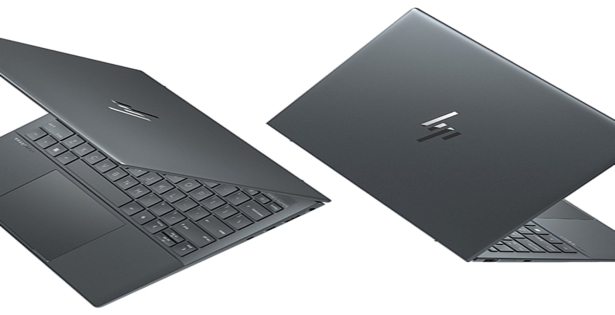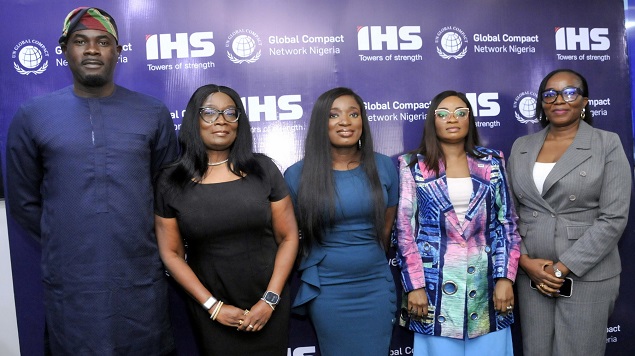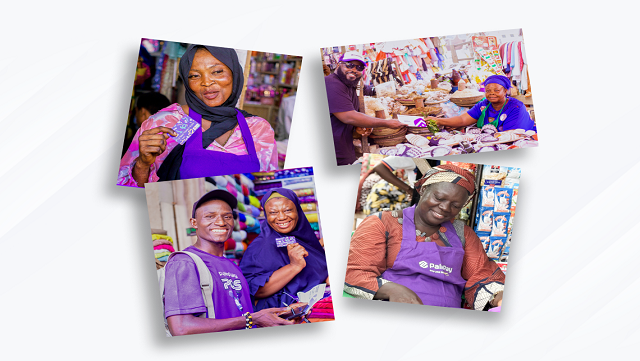General News
HP Strengthens Portfolio with its Largest Launch @ CES 2022

HP Inc. has unveiled new devices and solutions designed to enhance collaboration and creation experiences so people can work and create wherever they are.

Hybrid work requires more than simply collaborating and working together. It challenges technology to provide the same experience no matter where people are.
Workplaces are now wherever people want them to be, but the expectations of their work doesn’t change. People need to be seen and heard clearly and be productive and inspired.
“Hybrid changed everything. We now have more freedom to be productive and creative from anywhere,” said Alex Cho, president, Personal Systems, HP Inc.
“Our hardware, software, and solutions innovations deliver the experiences needed to thrive in a hybrid world, providing the power to blend our most productive environments for work and creativity with our most inspired ideas.”
Continuing to build on the recent launch of HP Presence, HP added exciting new features for better video conferencing experiences. People can now enhance their onscreen image to personalize how they show up in meetings with the Appearance Filter, while the myHP application provides a single dashboard to control and customize their PC experience – like applying video settings across their conferencing apps with a single click.
HP has also made its advanced collaboration technology available across more of its portfolio, including the EliteBook 800 G9 Series PCs, EliteBook 1000 G9 Series PC, ZBook Firefly G9, and Z40c and Z34c G3 Curved Displays, and newest Elite Dragonfly PCs. From 5MP cameras with HP Auto Frame to AI-based noise reduction filters and dynamic voice leveling technology, HP Presence delivers a better way to be seen, be heard, and share ideas for people outside of the meeting room.
Taking workforce collaboration to a whole new level, HP has expanded its portfolio of Elite Dragonfly devices, delivering on the customer demand for premium mobile devices when it comes to hybrid work. These devices drive progress towards increasing sustainability with recycled magnesium, aluminum, and ocean bound plastics.
The HP Elite Dragonfly G3 with Windows 11 empowers mobile professionals to bring their best to every meeting. Still lighter than air at under 1kg and available in Slate Blue or Natural Silver, the HP Elite Dragonfly G3 is powered by 12th Gen Intel processors. The HP Elite Dragonfly G3 features a 13.5” clamshell design, while giving users more screen with a taller 3:2 aspect screen ratio to keep them productive.
Enhanced by HP Presence, the Elite Dragonfly delivers an exceptional collaboration experience with Audio by Bang & Olufsen and four discrete amps working together to create immersive sound, HP Dynamic Voice Leveling automatically optimizing voice clarity, and AI-based noise reduction 2.0 enhances audio so people can be heard even when wearing a mask.
Equipped with intelligent charging, the battery learns work patterns to optimize power consumption. HP Wolf Security for Business provides a resilient defense against malware and hacking.
Purpose-built for the mobile intensity of cloud-centric workstyles, the HP Elite Dragonfly Chromebook Enterprise is the world’s most advanced Chromebook for business.
Delivering breakthrough collaboration experiences and security, the new premium Chromebook empowers business and cloud users with the simplicity of Chrome OS to collaborate, share and capture ideas.
The HP E24m, E27m, and E34m Conferencing Monitors are the world’s most advanced conferencing monitor series that deliver the most authentic face-to-face meetings in your dedicated workspace.
Present your best self on any call with a 5MP tiltable privacy webcam, improved lighting sensors, Windows Hello login, noise-cancelling mics, and front-firing speakers. Meeting over 200 quality benchmarks, these monitors are Zoom Certified so you can rest assured that you can be seen and heard with high-quality video and audio.
For people looking for a sleek and easy-to-use conferencing experience, the HP M24 and M27 Webcam Monitors are ideal for connecting with friends and family or learning from home via a 5MP webcam, front-firing speakers, and noise-cancelling mics. Connect your device with just one USB-C® cable and get seamless connectivity to any Chromebook with Works with Chromebook certification.
Every company needs their workforce to have improved productivity, collaboration, and security for how they work in a new hybrid world.
Additional new Windows 11 devices created with this in mind include the HP Elite x360 1040 G9 and HP EliteBook 1040 G9 which push the limits of performance and lightness for mobile workers everywhere.
Others include the HP EliteBook 800 G9 Series PCs which have been redesigned with an ultra slim chassis, a new 16:10 ratio screen, and a larger clickpad ratio, the HP EliteBook 600 G9 Series PCs, the powerful, easy to manage, and highly secure PCs that allow easy standardization into existing IT environments, while giving users the tools they need to work from almost anywhere; and the HP ProBook 400 G9 Series PCs which combine lightweight, upgradeable designs with commercial performance, security, and durability ideal for growing businesses.
In today’s hybrid world, we have entered a world of multi-device experiences, constantly swapping one device for another while navigating quick bursts of creativity on the go to extended focus times at a desk. Creators in this new environment need digital solutions that are accessible, consistent, complementary, and continuous.
This is where the HP ENVY Desktop PC comes in. It is the new expansive powerhouse for creatives, designed to be the central hub to help you learn, create, and manage every aspect of modern life.
The device keeps up as your creative skills grow with Windows 11, up to a 12th Gen Intel Core i9 processor and up to NVIDIA® GeForce RTX™ 3080 Ti graphics, along with one touch tool-less expandability for easy upgradeability.
Next is the HP Z2 Mini G9, the world’s most powerful mini workstation, which brings high performance that’s packed into a new versatile, contemporary design. Architects and graphic designers in need of a device small enough to fit space-constrained environments no longer need to sacrifice performance.
The Z2 Mini G9 comes equipped with low-profile NVIDIA RTX™ professional graphics, combined with next-gen Intel® Core™ processors, including K-Series, for seamless transitions between multiple applications for design, rendering, and simulation and the ability to power 2D to 3D workflows.
Another is the HP Z40c G3 and HP Z34c G3 Curved Displays, designed for creators and power users who want to replace their dual monitor setup with one large, immersive, and color accurate display.
The HP Z40c G3 Curved Display, the world’s largest conferencing monitor with an integrated 4K webcam, lets you see every detail on a sharp 5K:2K 40” screen with a high aspect ratio, critical pixel density, and get a seamless and fast connection with Thunderbolt 3 – enough to charge two PCs at once.
When creators are working on multiple devices, files, and projects at once, HP Device Bridge 2.0 brings uninterrupted creativity to your workstream. Connect both the Z2 Mini and Firefly – or any Windows® or Mac® devices – to either display and simultaneously work with the ability to drag and drop files between the two computers effortlessly.
Additional new devices and accessories for creators include the ZBook Firefly 14 G9, HP’s most mobile ZBook workstation, and ZBook Firefly 16 G9 which brings professional-level performance, an AI-enhancing webcam, and a 16:10 color-accurate HP DreamColor display to a truly sleek and light mobile workstation.
Also Designed for creators by creators is the new HP ENVY 27- inch All-in-One Desktop PC which lets you be at your best when you create, connect, and collaborate. A smaller but equally powerful version of the recently announced 34-inch model – this 27-inch 4K version features true-to-life color, powerful performance, and a detachable magnetic camera.
General News
IHS Nigeria, United Nations Global Compact Host High-Level Dialogue on Sustainability and Greener Business Practices in Nigeria

IHS Nigeria, in collaboration with the United Nations Global Compact Network Nigeria, hosted a high-level private sector dialogue themed “Collaborative Strategies for Greener Business Practices, Innovation and Sustainable Development”.

The event, held in Lagos, brought together key players from different sectors including finance, law, telecommunications, biodiversity, and corporate sustainability to explore actionable pathways to achieve meaningful environmental stewardship in Nigeria.
The panel session offered bold perspectives on integrating sustainability into business frameworks across different sectors, whilst dispelling myths, and highlighting opportunities for organizations, and calling for collective action from all players within the business value chain.
Delivering a keynote address, Titilope Oguntuga, Director, Sustainability at IHS Nigeria, emphasized the urgency of environmental consciousness: “Sustainability is not a destination — it’s a collective journey.
“It requires courage to transform, vision to lead, and collaboration to scale. Nigeria stands at a crossroads. We can either be overwhelmed by the risks or rise to become a beacon of green innovation and inclusive growth in Africa. The choice is ours — and the time is now.”
Sylvie Josel, Lead, Biodiversity and Nature-Based Solutions at the United Nations Global Compact, joined virtually from New York and spotlighted nature as a strategic asset:
“Nature must no longer be treated as an afterthought. It underpins everything, from human rights to supply chains. Embedding biodiversity into a company’s core strategy isn’t just a risk mitigation measure; it’s a smart, future-forward business imperative”.
Lanre Babalola, Group Head, Climate Finance and Sustainability at the Bank of Industry (BOI), provided insights into how BOI is funding sustainable ventures and driving innovation: “We look beyond profitability; we look at environmental and social impact. Whether it’s plastic roads, biogas, or solar transitions, we support businesses that are not only bankable but capable of reshaping the future.”
From the legal perspective, Oyeronke Oyetunde, General Manager, Regulatory Affairs, MTN Group, drew attention to the regulatory challenges hindering sustainability adoption: “Our legal frameworks are trailing behind today’s sustainability realities. We need forward-thinking laws, reduced regulatory silos, and incentives that reward the right behavior. Sustainability can’t thrive where enforcement is weak, and taxation is excessive.”
Abimbola Agbejule, Head, Corporate Sustainability and Responsibility at Wema bank, spoke passionately about inclusiveness in sustainable development: “You don’t need to start big to make impact. MSMEs make up a huge part of our economy. Sustainability should be embedded in their day-to-day activities, and we must democratize access to knowledge, tools, and partnerships.”
The session was moderated by Gloria Okorie, Head of Programs at the United Nations Global Impact Center.
The event closed with a resounding call to action for stronger legal frameworks, deeper collaborations, and inclusive capacity building across sectors. The event further reinforces IHS Nigeria’s position as a leader in corporate sustainability and innovation in Nigeria.
“At IHS Nigeria, we recognize that true progress happens when sustainability is not an obligation, but a culture, lived every day, across every unit,” Titilope Oguntuga added.
Through initiatives like this dialogue, IHS Nigeria and its partners continue to champion solutions that protect the planet, empower people, and ensure long-term business viability.
General News
Bridging the Digital Divide: Over 700 Young Africans Empowered by Paradigm Initiative

Paradigm Initiative (PIN), a leading digital rights and inclusion nonprofit, has revealed in its 2024 Annual Impact Report that over 707 young individuals across 11 African countries have been empowered through its flagship LIFE Legacy Programme.

The initiative delivers training in life skills, ICT, financial literacy, and entrepreneurship—transforming underserved communities across the continent.
In 2024, the LIFE Legacy Programme ran 25 training cohorts across Cameroon, DRC, Ghana, Kenya, Senegal, South Sudan, Liberia, Uganda, Tanzania, Zambia, and Zimbabwe. In Senegal, 60 laptops were distributed to local partners, while digital literacy programmes were launched in schools in Cameroon and Tanzania through the LIFE@School initiative.
PIN advanced its advocacy by supporting 29 legal cases in Ghana, Kenya, and Nigeria. A notable success was the landmark judgment in Molehin v. UBA, where the bank was found guilty of violating data privacy laws.
PIN’s research and media efforts made powerful waves. The Londa digital rights report, covering 26 countries, was downloaded 8,457 times. Its fourth short film, Undersight, recorded nearly one million views on YouTube. PIN also developed an AI strategy report with TrustLaw and collaborated with the Centre for Democratic Technology to assess content moderation policies for Kiswahili across Kenya and Tanzania. A separate report highlighted the troubling deployment of surveillance technologies across Africa, which was referenced in direct advocacy engagements with a telecom operator.
The organisation’s advocacy also contributed to the adoption of the African Commission’s Resolution 580, which urges governments to avoid Internet shutdowns during elections—strengthening digital freedom across the continent.
Meanwhile, the Digital Rights and Inclusion Forum (DRIF) convened in Accra attracted 1,004 delegates from 61 countries, strengthening regional collaboration and amplifying the voice of civil society. PIN’s strategic communications pushed its media reach to 1.43 billion and social media engagement to 8.8 million.
Alongside training and policy efforts, the organisation inspired young changemakers through youth-focused campaigns and hosted seven fellows under the Digital Rights and Inclusion Learning Lab (DRILL) fellowship.
Crowning a year of impact, PIN earned the maiden PrivCon Privacy Award in Nigeria and was recognised in the Social Innovation Category at the Nigeria Innovation Awards for its work connecting African youth to digital opportunity.
General News
PalmPay’s Bold Move For Social Impact in Northern Nigeria

In the busy Fagge Market in Kano, Zahra Bello, a middle-aged entrepreneur who runs a fabric store, speaks about her experience with mobile banking and how this has simplified business transactions and improved her small business.

Behind the growth of these resilient women entrepreneurs lies a story of transformation powered by technology.
“My name is Zahra Bello, I’m from Dambatta in Kano State, and I’m a fabric trader. I first heard about PalmPay from my elder brother in March 2024. He told me how he used the PalmPay Target Savings feature to buy new machinery for his farm and even earned interest. That inspired me to try it too.”
Zahra downloaded the PalmPay app that very day. By December, she’d used the Target Savings plan to restock her shop with new fabrics, an achievement she never thought possible within such a short period. “I was so happy,” she smiles. “The interest I earned on my savings motivated me to save more. PalmPay has become my savings box. I use it for all my transactions now.”
Her story, like many others, is the inspiration for PalmPay’s evolving vision of inclusive banking in Nigeria’s underserved communities.
Women, SMEs, and Technology
Financial exclusion remains a critical challenge in Northern Nigeria. According to EFInA’s 2023 Access to Financial Services survey, an estimated 28.8 million adults in the North are excluded from the formal financial system, with exclusion rates as high as 47% in the Northwest.
Among women, especially those in rural areas, the figures are even more concerning, as these numbers represent the daily reality of millions of women who run informal businesses and contribute to household income without access to banking, credit, or digital tools.
PalmPay’s initiative addresses this gap directly. 5,000 female entrepreneurs in Kano and Kaduna will receive hands-on financial literacy training on mobile payments and their shops are rebranded with signages, aprons, and other kits that will enhance visibility for their businesses.
“I used to write down every sale in a notebook. Now I track everything with my PalmPay account,” says Rabi Abdullahi, a trader in Kano. “Customers trust me more now that I have a business name and branded store.”
PalmPay has done its due diligence to understand the challenges and has offered a tailored approach to solving these issues which includes this social impact initiative.
Social Impact and Strategic Growth
With over 35 million users in Nigeria, the company is keen to expand in regions where smartphone adoption is rising but digital finance penetration remains low.
Femi Hanson, Head of Marketing and Communications, explains: “We see this as long-term ecosystem building. When you give small business owners the tools to grow, you don’t just gain users, you build loyalty, trust, and sustainable impact.” This also aligns with Nigeria’s Financial Inclusion Strategy goal to reach 95% inclusion by 2025, a benchmark that can’t be reached without focused efforts in the North.
The project has earned the support of traditional leaders, most notably His Royal Highness, the Emir of Kano, Dr. Muhammadu Sanusi II, who praised the initiative and called for greater collaboration between the private sector and community stakeholders.
With the success of this initiative, PalmPay has continued to expand its solutions in these regions offering support to even more women.
In Northern Nigeria, where the need is great and the gap wide, PalmPay is proving that true impact goes beyond offering products to providing support and meeting the needs of its users at the grassroots.

 Telecom2 days ago
Telecom2 days agoALTON Clarifies on Migration to End-User Billing for USSD Services

 News3 days ago
News3 days agoDigital Africa Global Consult, NDPC Partner on Ground-Breaking “Nigeria Data Challenge” Initiative

 E-Financial2 days ago
E-Financial2 days agoNigerian Stock Market Suffers ₦183 Billion Loss Amid Profit-Taking

 News2 days ago
News2 days agoDStv Rewards Loyal Customers with Free Package Upgrades

 Telecom2 days ago
Telecom2 days agoLagos Future Conference 2025: Stakeholders Call for Digital Responsibility and Grassroots Innovation

 General News2 days ago
General News2 days agoAfrican Parliamentarians Seek Answers from Telcos on Quality of Service

 News1 day ago
News1 day agoLasaco Assurance to Invest in Technologies, Systems to Deliver Value to Clients

 E-Financial2 days ago
E-Financial2 days agoSEC Working on Stablecoin Regulation Framework




























